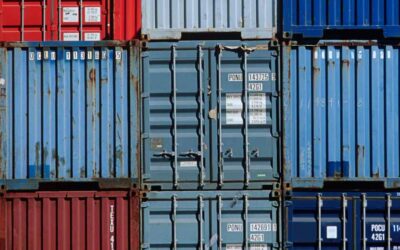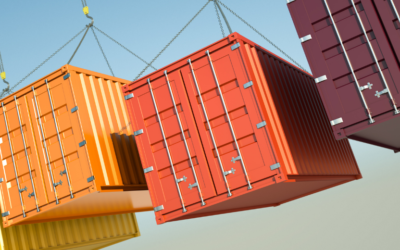Shipping containers are a ubiquitous sight in ports, on highways, and in industrial zones across the globe. They are the workhorses of international trade, silently transporting goods of all kinds across the world’s oceans. But have you ever wondered how much these steel giants weigh?
This guide will delve into the world of shipping containers, providing an in-depth look at their weight, factors contributing to it, and why this knowledge is crucial in the shipping industry.
Understanding Shipping Container Weight
Understanding the weight of shipping containers is critical in the logistics and transportation industry. There are three important terms related to the weight of a shipping container that one must be aware of: Tare Weight, Payload, and Gross Weight.
Tare Weight is the weight of the empty container without any cargo or goods inside. This is essentially the weight of the steel structure itself and varies depending on the dimensions and materials used in the container’s construction.
Payload is the maximum weight of the cargo that can be loaded into the container. It’s the difference between the gross weight and the tare weight.
Gross Weight, also known as the Maximum Gross Mass, is the combined weight of the tare weight and the maximum payload. This is the maximum allowable weight of a loaded shipping container when it’s in transit.
Understanding these terms and their implications helps in the effective planning of cargo loading and transportation, ensuring safety and compliance with transportation regulations.
Factors that Affect the Weight of a Shipping Container
Several factors influence the weight of a shipping container, impacting its tare weight, payload, and gross weight. These include the container’s size, materials, and any modifications made.
Size is the most apparent factor. Shipping containers come in various standard sizes, and naturally, a larger container will weigh more than a smaller one. The most common sizes are 20-foot and 40-foot containers, but there are also smaller 10-foot containers and larger containers that can be up to 53 feet long.
The materials used in the container’s construction also affect its weight. Most containers are made of corten steel, known for its durability and resistance to weather conditions. However, the thickness of the steel and the type of floor used, usually plywood or bamboo, can vary, affecting the container’s weight.
Lastly, modifications made to the container for specific purposes, like refrigeration units for perishable goods or additional partitions for office containers, can add to the container’s overall weight. Understanding these factors helps in planning the loading and transportation of containers, ensuring that the gross weight stays within permissible limits.
The Average Weights of Different Types of Shipping Containers
Standard shipping containers are typically divided into two main categories, dry containers and refrigerated or “reefer” containers. Their weights can vary depending on their size and modifications, but some general averages can give a basic idea.
Dry Containers are the most common type of shipping container, used for a wide variety of cargo that doesn’t require temperature control. The 20-foot dry container, usually weighing around 2.3 tonnes (tare weight) can carry a payload of approximately 25 tonnes. A 40-foot dry container has a tare weight of around 3.8 tonnes and can carry a payload closer to 27 tonnes.
Refrigerated containers, or “reefers,” are used to transport temperature-sensitive cargo. The refrigeration units add to their overall weight. A 20-foot reefer container has a tare weight of around 3 tonnes and can carry a payload of roughly 21 tonnes. The 40-foot reefer containers are heavier, with a tare weight of about 4.5 tonnes and a payload capacity of around 26 tonnes.
Take note that these figures are estimates, and actual weights can vary based on the container’s specific design, age, and manufacturer. Always check the container’s CSC plate for precise weights before planning transportation and cargo loading.
Here are the size and weight readings of OZBOX shipping containers:
| Container Size and Type | External Length | External Width | External Height | Unit Weight (Tare) | Payload | Cube |
| 8ft Shipping Container | 2,488mm | 2,200mm | 2,260mm | 950 kg | 5,050 kg | 9.95 cu.m |
| 10ft Shipping Container | 2,591mm | 2,393mm | 2,393mm | 1,255 kg | 8,095 kg | 15.9 cu.m |
| 20ft Shipping Container | 6,058mm | 2,438mm | 2,591mm | 2,060 kg | 24,420 kg | 33.2 cu.m |
| 20ft High Cube Container | 6,058mm | 2,438mm | 2,896mm | 2,250kg | 28,230 kg | 37.42 cu.m |
| 40ft Shipping Container | 12,200mm | 2,438 mm | 2,591mm | 3,510 kg | 26,970 kg | 67.2 cu.m |
| 40ft High Cube Container | 12,200mm | 2,438mm | 2,896mm | 4,050 kg | 26,430 kg | 75.9 cu.m |
Understanding the Tare Weight and Gross Weight
The terms ‘Tare Weight’ and ‘Gross Weight’ are often used in shipping container logistics, and understanding them is vital for safe and legal transportation.
‘Tare Weight’ pertains to the weight of the empty shipping container, without any cargo or contents. This is a critical figure for transportation planning as it indicates how much weight the transportation vehicle or vessel can handle before loading any goods.
On the other hand, ‘Gross Weight’ refers to the total weight of the shipping container, including the weight of the container itself (Tare Weight) plus the weight of its contents (payload). This figure is particularly crucial to ensure compliance with road, rail, or sea freight weight restrictions and regulations. Overloading containers beyond their rated gross weight poses serious safety risks and can lead to severe legal repercussions. Always cross-verify the gross weight against the container’s CSC plate before transportation.
Remember, different types of containers will have different tare and gross weights. For instance, a dry container will usually have a lower tare weight compared to a refrigerated container of the same size due to the added weight of the refrigeration unit. Therefore, when planning for transportation, taking the specific type and size of the container into account is essential for accurate weight estimation.
Calculating the Empty or Loaded Weight of A Container
Calculating the weight, whether empty (Tare Weight) or loaded (Gross Weight), of a shipping container is a straightforward process. It involves using a calibrated weighbridge before and after loading the container. The difference between these weights gives you the weight of the loaded goods, also known as the cargo weight.
Weighing an Empty Container (Tare Weight)
The Tare Weight of a container is generally marked on the container’s door, as well as on the CSC safety approval plate. Despite this marking, it is advisable to weigh the empty container before loading for accuracy. Deviations might occur due to wear and tear or modifications.
Weighing a Loaded Container (Gross Weight)
After the container is fully loaded, it should be weighed again on a calibrated weighbridge. This weight gives the Gross Weight of the container (Tare Weight plus cargo weight). Always ensure this weight is within the permissible transport limits.
Different Weighing Options for Shipping Containers
There are several methods available for weighing shipping containers, each with its own benefits and considerations.
Weighbridge
The most common way to weigh a shipping container is by using a weighbridge. This large, industrial scale is capable of handling the weight of a fully-loaded container and provides highly accurate readings. The container is simply driven onto the weighbridge and the weight is recorded.
Onboard Scales
Onboard scales are equipped on the vehicle that’s transporting the containers. These scales provide an estimate of the weight while the containers are being moved. However, these scales may not be as accurate as weighbridges due to the movement and balancing of the vehicle.
Portable Weighing Pads
Lightweight and compact, portable weighing pads are a convenient option for locations without a permanent weighbridge. The pads are placed under the wheels of the truck holding the container, and the weight is calculated by adding the weight measurements from each pad.
Remember, accuracy is paramount when weighing containers for transportation. It is recommended to choose a weighing option that provides the most precise and reliable results for your needs.
Tips To Reduce Overall Shipping Container Weight
There are several strategies that can be employed to reduce the overall weight of shipping containers, thereby enhancing efficiency and reducing costs.
- Optimise Packaging: Efficient packaging can significantly reduce container weight. Use lightweight, yet sturdy packaging materials and ensure that they are optimally utilised.
- Consolidate Shipments: Try to consolidate smaller shipments into one container as far as possible. This can help to reduce the number of containers used, thus reducing overall weight and cost.
- Use Lightweight Pallets: Switching to lightweight pallets can lead to substantial weight savings. There are several lightweight alternatives available in the market, such as plastic or aluminium pallets, that are equally effective.
- Regular Maintenance: Regular maintenance of the containers can also help in weight reduction. Removing rust and redundant fittings can make a significant difference to the overall weight.
- Consider Loading Techniques: Pay attention to how the goods are loaded into the container. Proper loading can help in achieving a balanced weight distribution, thereby reducing the strain on the container and potentially reducing the overall weight.
The above strategies require careful planning and execution, but the benefits in terms of cost savings and increased efficiency make these considerations well worth the effort.
Summary
In conclusion, shipping containers can weigh anywhere from under a ton to over 12 tons depending on what make and model of container is needed and the material it’s made from.
Taking into consideration the size and weight of a container you purchase or hire will have an impact on your overall cost, as well as the safety of cargo that is in transport.
This post has outlined the different weights involved with shipping containers, how their size and material can affect these weights, and recommends ways to reduce the weight to save you money.
Whether you’re looking for a container to buy or hire, OZBOX offers quality shipping solutions at competitive prices – so why not reach out today to find out how we can meet your needs? Let’s get started – talk to OZBOX about shipping container sales or hire!









